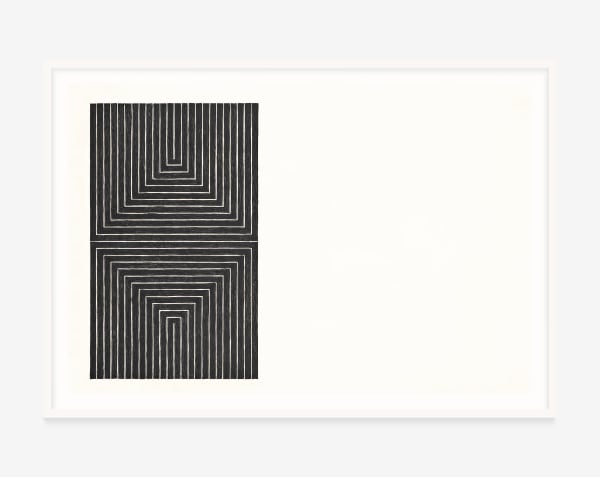“I don’t like to say I have given my life to art. I prefer to say art has given me my life.”
Frank Stella (Malden, Massachusetts, 1936 - Manhattan, New York, 2024) was a painter, sculptor and printmaker known for his irregular shaped canvases, large-scale reliefs and maximalist sculptures. Stella studied painting at the Phillips Academy in Andover, MA, and went on to study history at Princeton University. He moved to New York after his graduation in 1958 and started working on a series of innovative paintings that led to his so-called Black Paintings (1958-1959), Aluminum Paintings (1960), and Copper Paintings (1960–61). These series established his reputation as a pioneer of Minimalism. In the mid 1960s, Stella expanded his ideas of the shaped canvas with the Irregular Polygons (1965–67) and Protractor series (1967–71). In the 1970s, the bold geometry of the Polish Village works (1970–73) eventually evolved into baroque elaborations of the space in the 1980s and 1990s, producing a body of work that indirectly responded to Herman Melville’s Moby Dick. Stella’s early statement of “What you see is what you see” was once considered as the unofficial credo of Minimalism practices.


